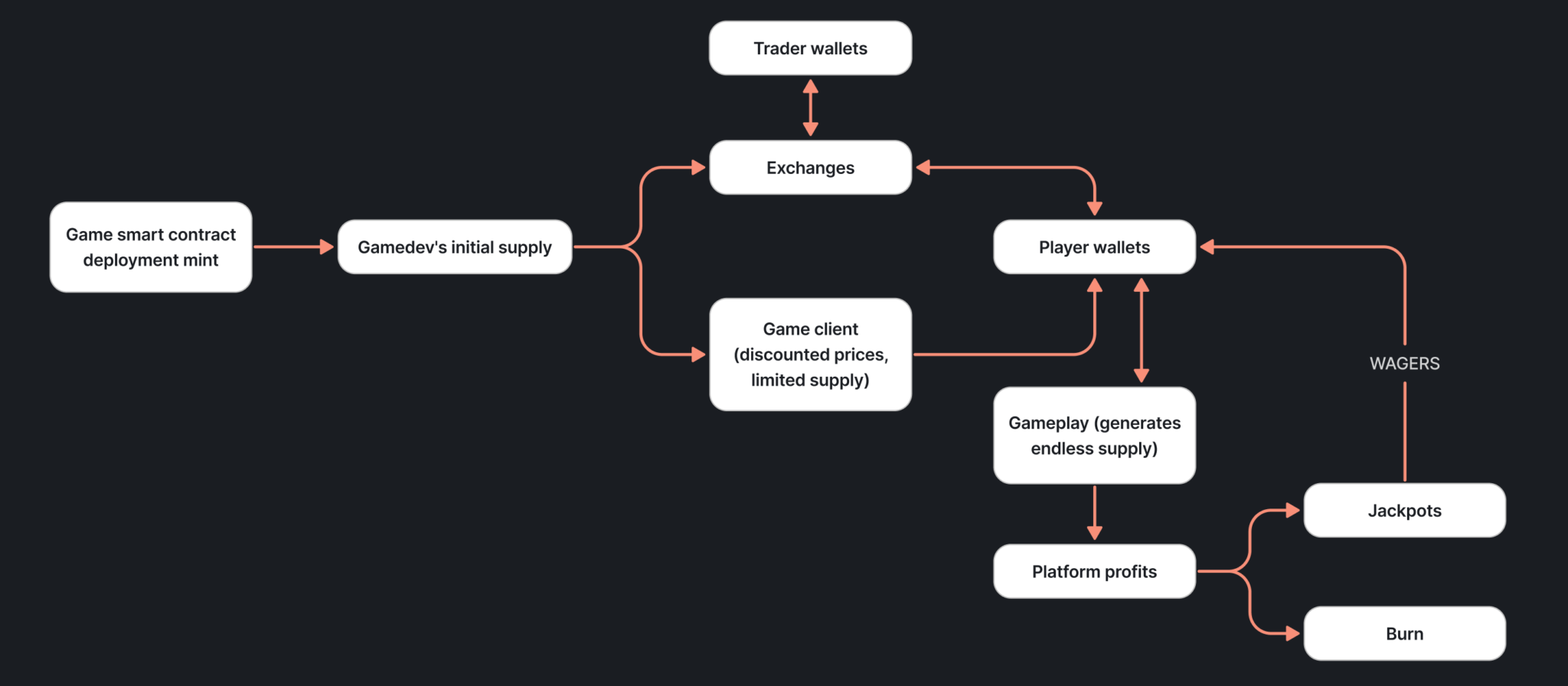A web3 gaming alpha for you. While developing our new game called Degen Trail, we created a new paradigm in gaming economic models: ultra sound games.
Pretty much everything you do as a game designer creates inflation. And it’s really hard to put deflationary pressure on a token. Here’s how we’re addressing this challenge with ultra sound games.
What are ultra-sound games?
Ultra sound games are games with immutably sound economies. Inspired by Ethereum Ultra-sound money, or currency with a higher burn rate than emission rate, ultra sound games have at least one very powerful built-in deflationary mechanism: burning of the rake.
Imagine you are playing cards in a casino. At the end of every hand, the casino puts its rake in a wheelbarrow, carts it off to a furnace, and incinerates it.
This is exactly what ultra sound games do. By burning the rake in the context of a web3 game, ultra sound games provide a built-in deflationary mechanism to keep their economies sound.
Players benefit from ultra sound mechanisms even when they lose. Tokens that you lose playing the game are taken permanently out of circulation, meaning that the market cap for the coin is distributed over a smaller supply. The coins that you still hold thus become more valuable. And that’s true for all holders, not just the people who are playing.
Here’s an example to explain it further.
An example of how it works

When a game’s smart contract is deployed, it mints an amount of tokens to the deployer, to be used for bootstrapping purposes. Whoever deploys the contract gets that supply of token.
A portion of these tokens is distributed by the game developers to the players through the game client. They are sold to players at a discount, especially at moments in the game when having more tokens could be crucial to a player’s survival. This is also good for the economy, because it makes it likely that the tokens will be used in the game instead of held in reserve as an investment. This discounted sale is limited in supply by the amount of tokens the developers of that game client have.
The game has a variable token supply. Unlike most ERC20 tokens, ultra sound games don’t have a fixed supply of tokens that’s issued once and then distributed by a controlling party.
After the initial mint, tokens are issued through gameplay and they are burned through gameplay. The smart contract is issuing tokens based on game logic. And this process is happening all the time as long as the game is being played.
In this example, the game is fully on-chain and takes a rake on all moves. The rake, that a controlling party would normally take, is being burned. A percentage of all the money that the player spends in the game is being burned, and a percentage is going to the jackpot. Jackpots are won by players through playing or wagering.
When tokens get burned, the value of the tokens that are left goes up. This guarantees that the token price remains high even after large sales.
Whenever someone plays, every holder wins.
All of this means that the tokens have a strong deflationary dynamic. But these are not deflationary tokens. It’s not that the supply is going down globally all the time. It’s that there’s a mechanic that controls inflation on the token. The inflation rate might not be negative, but the deflationary dynamic keeps the inflation rate low.
For people who are only interested in investment opportunities – you don’t have to interact with the game, you can opt to trade the tokens on exchanges.
What’s the catch?
The value of the token doesn’t just come from inflation and deflation. It also comes from market sentiment around the token. And the market sentiment might be very positive for a token that has a lower inflation rate.
The more activity the game has, the higher the burn rate is. Inflation slows down, but people still have high demand for the token. So the price goes up.
“The catch” is, to create high demand you need to make good games with fun gameplay. Without a good game, none of this works.
So would you choose ultra sound model for your game? How would you apply it? Would you like to know more details about how it works? If you have any questions, reach out.
